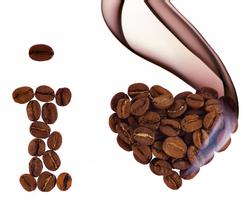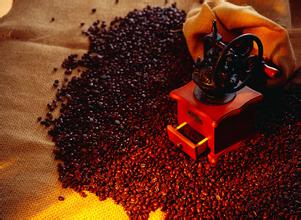Uganda Coffee Bean Flavor Description Grind Scale Treatment Taste Region Variety Introduction
Description of flavor of Ugandan coffee beans introduction of varieties in taste producing areas by grinding scale treatment
The cultivation of coffee in Uganda is all small-scale family operation. The livelihood of 25% of the population is closely related to coffee production. About 500000 farms grow coffee, but mainly Robster. Robusta accounts for 90% of coffee production, and the remaining 1 is Arabica coffee. Arabica and Robusta collect from October to February of the following year.
Ugandan coffee is mainly exported to the European Union, with Germany, Italy and other countries as the largest buyers of coffee.
Mbale on the eastern side of the Elgang Mountains and other producing areas on the western side near the border of the Democratic Republic of the Congo have the export name Wugar. The official ranks are Oaganic (Organic), Bugisu AA, Bugisu A, Bugisu B, Bugisu PB, Wugar, Drugar and other unlisted grades. To find Ugandan coffee with good performance, you must first recognize the three grades of BugisuAA, An and PB, but because the country is inland and has many transportation problems, it often comes to raw beans with low moisture content and not emerald green appearance, but Ugandan coffee is not a type of coffee that emphasizes aroma, as long as the raw beans are not and turn 100 or yellowed, they can generally have a good flavor performance in the producing areas. It has a low ripe fruit aroma, such as the taste of red wine, and a thick mellow thickness, which is similar to some Kenyan beans with low tone, but with a mild soil flavor, so it is quite different from other East African countries in flavor characteristics. on the contrary, it is somewhat similar to Asian Indonesian Sulawesi Tonaga coffee and Java state-owned manor coffee. The baking degree between City+ and Full City+ is all better.
Coffee is tropical plantation agriculture, and the main location factors affecting agriculture are: natural conditions are analyzed from four aspects: climate (precipitation, heat, light), topography, soil, water source; socio-economic factors: market, transportation, policy, agricultural production technology, industrial foundation, labor force, land price; technical and economic factors: improved varieties, chemical fertilizer, machinery, irrigation and so on. It can be seen from the picture that the three countries in the picture are located near the equator, with low latitude, high average temperature and sufficient light and heat; at the same time, in the East African Plateau, the daily range is large and nutrient accumulation is large; the local soil is fertile; there are many rivers and lakes and rich water sources; developing countries, the labor force is abundant and cheap; policy support

Important Notice :
前街咖啡 FrontStreet Coffee has moved to new addredd:
FrontStreet Coffee Address: 315,Donghua East Road,GuangZhou
Tel:020 38364473
- Prev

Introduction to the characteristics of flavor description and taste treatment of coffee bean varieties and varieties in Ethiopia
Flavor description of Ethiopian Coffee Bean varieties: Ethiopian Ethiopia Sidamo G2 (Sidamo G2): Sidamo is located in the south of Ethiopia, extending to the administrative regions of Arsi and Bale in the east and Gamogofa in the west. Sidamo coffee is cultivated at altitude 1400m-2000m. The industry here is agriculture.
- Next

Introduction to Colombian Coffee Flavor description Grinding scale producing area Variety treatment method and Taste Manor
Columbia coffee flavor description grinding scale production area variety treatment taste manor introduces its unique geographical environment to create the high quality of coffee, Colombia, beautiful mountains and rivers, beautiful scenery, pleasant climate, spring all year round, fresh air, refreshing. Colombia's climate is mild, the air is * *, and the diversity of climate makes it a harvest season all year round, with different species at different times.
Related
- Detailed explanation of Jadeite planting Land in Panamanian Jadeite Manor introduction to the grading system of Jadeite competitive bidding, Red bid, Green bid and Rose Summer
- Story of Coffee planting in Brenka region of Costa Rica Stonehenge Manor anaerobic heavy honey treatment of flavor mouth
- What's on the barrel of Blue Mountain Coffee beans?
- Can American coffee also pull flowers? How to use hot American style to pull out a good-looking pattern?
- Can you make a cold extract with coffee beans? What is the right proportion for cold-extracted coffee formula?
- Indonesian PWN Gold Mandrine Coffee Origin Features Flavor How to Chong? Mandolin coffee is American.
- A brief introduction to the flavor characteristics of Brazilian yellow bourbon coffee beans
- What is the effect of different water quality on the flavor of cold-extracted coffee? What kind of water is best for brewing coffee?
- Why do you think of Rose Summer whenever you mention Panamanian coffee?
- Introduction to the characteristics of authentic blue mountain coffee bean producing areas? What is the CIB Coffee Authority in Jamaica?

